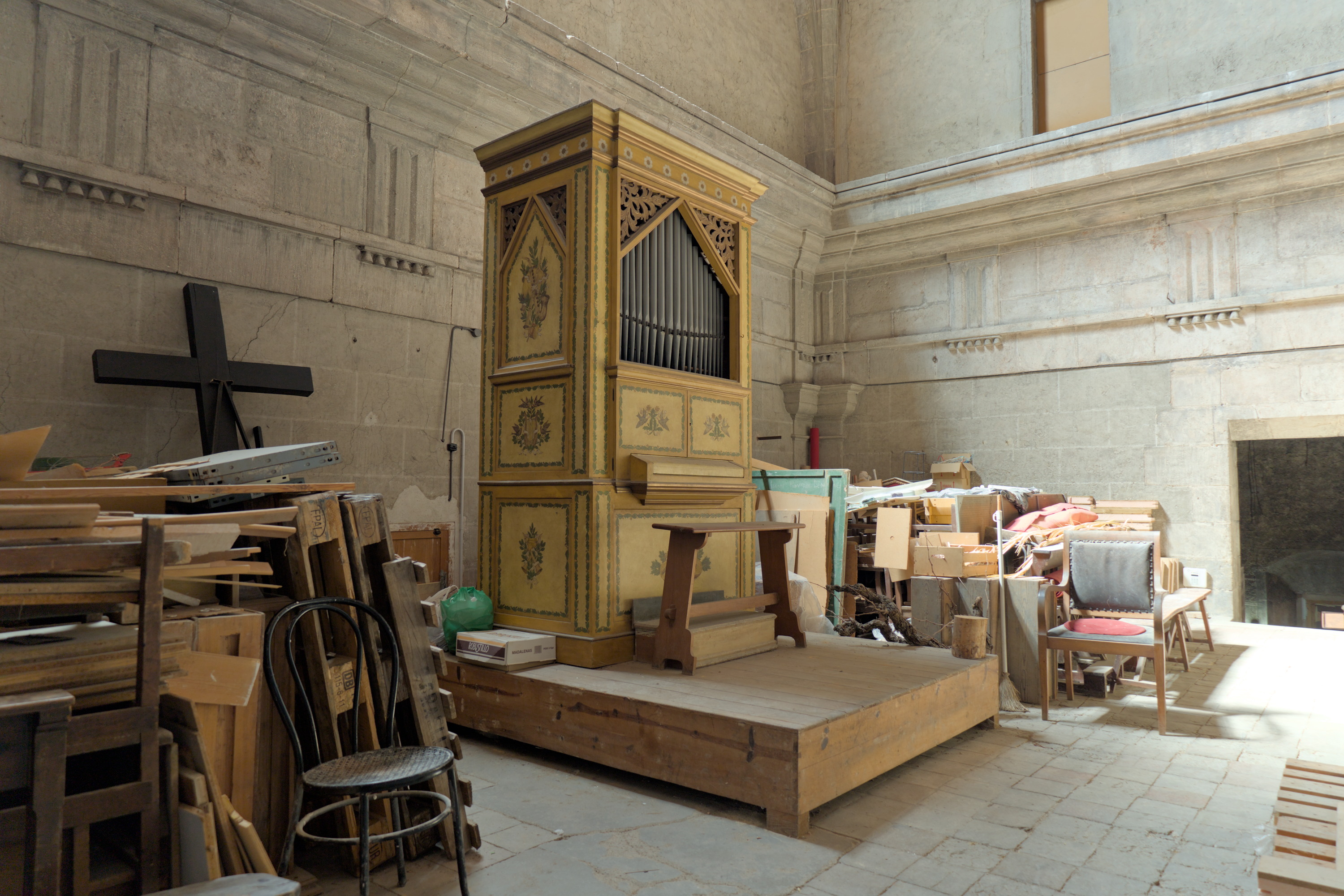L'Arboç, Església de Sant Julià
| Builder | Francisco Aragonès Gerona |
|---|---|
| Year | ca. 1951 |
| Period/Style | Modern |
| Stops | 4 |
| Keyboards | 1 |
| Keyaction | tracker/mechanical |
| Tuning | Unknown |
Based on the model of San Sebastià de Montmajor and Gallifa, two more instruments are made. One of them is Casimir Rull i Raspall (1911–1957), built under the supervision of Joan Gibert and presented at the Exhibition of Religious Art that from 11 to 30 May 1951 celebrates in Barcelona the Promotion of Decorative Arts. Once the exhibition is finished, it is taken to the Sant Lleïr farmhouse, in Sant Antoni de Vilamajor, Casimir Rull summer residence. After a fleeting stay in 1956 in an exhibition of liturgical art in the chapel of the former hospital of the Santa Creu in Barcelona, he went to the parish of Sant Julià de l’Arboç, where he presented on April 20, 1957, Easter Eve, and the next day in a concert by Robert de la Riba. The decoration of the furniture is attributed to Rafael Solanic, drawing master of Ramon Rogent, nephew of Joan Rogent.
Currently (2024), the organ engine does not work and therefore remains silent. The keyboard has been twisted, probably by the choice of wood at the time of its construction. Although the piece of furniture suffers from urchins, the drone tubes and their corresponding pneumatic secret are not affected. The condition of the skins of the bellow and mechanical secret is unknown.
Layout
The first octave of the "Bordó 8'" is made of wood and lies behind the instrument on top of a pneumatic secret. The following nine tubes (c–gs·) are already metallic, but continue on another pneumatic secret. The same happens with the first nine tubes of the "Principal 4s" (C–Gs). The next 21 tubes in this register (A–f') are on the facade, also on the fourth pneumatic secret. The rest of the tubes in this organ remain on their air.
Currently (2024), the organ engine does not work and therefore remains silent. The keyboard has been twisted, probably by the choice of wood at the time of its construction. Although the piece of furniture suffers from urchins, the drone tubes and their corresponding pneumatic secret are not affected. The condition of the skins of the bellow and mechanical secret is unknown.
Layout
The first octave of the "Bordó 8'" is made of wood and lies behind the instrument on top of a pneumatic secret. The following nine tubes (c–gs·) are already metallic, but continue on another pneumatic secret. The same happens with the first nine tubes of the "Principal 4s" (C–Gs). The next 21 tubes in this register (A–f') are on the facade, also on the fourth pneumatic secret. The rest of the tubes in this organ remain on their air.
| Manual |
|---|
| Bordó (c'/cs') 8′ |
| Principal (c'/cs') 4' |
| Quinzena (C-h) 2′ |
| Nasard (c'-c''') 2 2/3′ |
No Video/Audio samples available.
No sources available.
 Pipe Organ Map
Pipe Organ Map